1. Advanced Pattern Recognition in Microbiome Data
AI algorithms excel at detecting complex patterns in vast soil microbiome datasets that human analysis would miss. By applying deep learning and graph-based models, researchers can uncover subtle relationships among thousands of microbial species, identifying “keystone” microbes and interaction patterns that drive soil ecosystem function. This advanced pattern recognition helps explain how microbial communities respond to different soil conditions, crop practices, and environmental stressors. In turn, it guides hypotheses and experiments to better understand soil health. Ultimately, AI’s ability to sift microbial big data enables a more holistic and detailed view of soil ecology, revealing hidden trends that inform sustainable management.

A single gram of fertile soil can harbor over 50,000 distinct microbial species, yet less than 1% of these soil microbes have been well-characterized by scientists (Institute for European Environmental Policy, 2023). This immense biodiversity creates highly complex data sets. AI-based pattern recognition is crucial for parsing such complexity – for instance, a 2023 deep learning study successfully identified key “keystone” bacteria within complex soil communities by learning subtle co-occurrence patterns, something traditional methods struggled to achieve (Wang et al., 2023). The ability of AI to handle millions of DNA sequences and thousands of taxa at once is enabling researchers to detect these hidden microbial patterns that underpin soil health.
2. Predictive Modeling of Soil Health
Machine learning allows scientists to forecast how changes in environment or management will affect soil microbes and overall soil health. By training on historical data (e.g. climate, irrigation, crop rotations), AI models can predict shifts in microbial diversity or function under future scenarios. These predictions help farmers and land managers take proactive steps – such as altering watering schedules or adding cover crops – before soil health declines. Over time, predictive models become more accurate by incorporating new field outcomes. This AI-driven foresight optimizes soil conditions, boosts crop productivity, and builds resilience to climate variability by anticipating problems in advance rather than reacting after damage occurs.

Recent research has demonstrated the power of AI to predict soil health metrics from microbiome data with high accuracy. In one study, scientists used 16S rRNA gene profiles from soil samples to train machine learning models to predict 12 different soil health indicators (covering biological, chemical, and physical aspects). The best models achieved a coefficient of determination (R²) of about 0.8 for continuous soil health scores and a Kappa statistic ~0.65 for categorical soil health ratings – meaning the AI could explain ~80% of the variability in soil health measurements and classify soil condition quite reliably (Wilhelm et al., 2022). Such models can forecast outcomes like soil organic carbon levels or fertility changes under different management, enabling data-driven decisions to maintain or improve soil health.
3. Automated Classification and Clustering of Microbial Taxa
AI dramatically speeds up the identification and grouping of microbes in soil samples. Instead of laboriously classifying organisms by hand, modern algorithms can process DNA sequences from thousands of species in parallel and cluster them into meaningful taxonomic or functional groups. Tools leveraging machine learning distinguish subtle genetic differences to define operational taxonomic units (OTUs) or amplicon sequence variants (ASVs) at unprecedented scales. This automation improves consistency and reduces human error in microbiome analysis. By quickly organizing which bacteria and fungi are present, researchers can more easily compare samples and detect changes in community composition. In essence, AI enables high-throughput microbiome profiling – turning DNA data into a catalog of soil life in a fraction of the time of traditional methods.
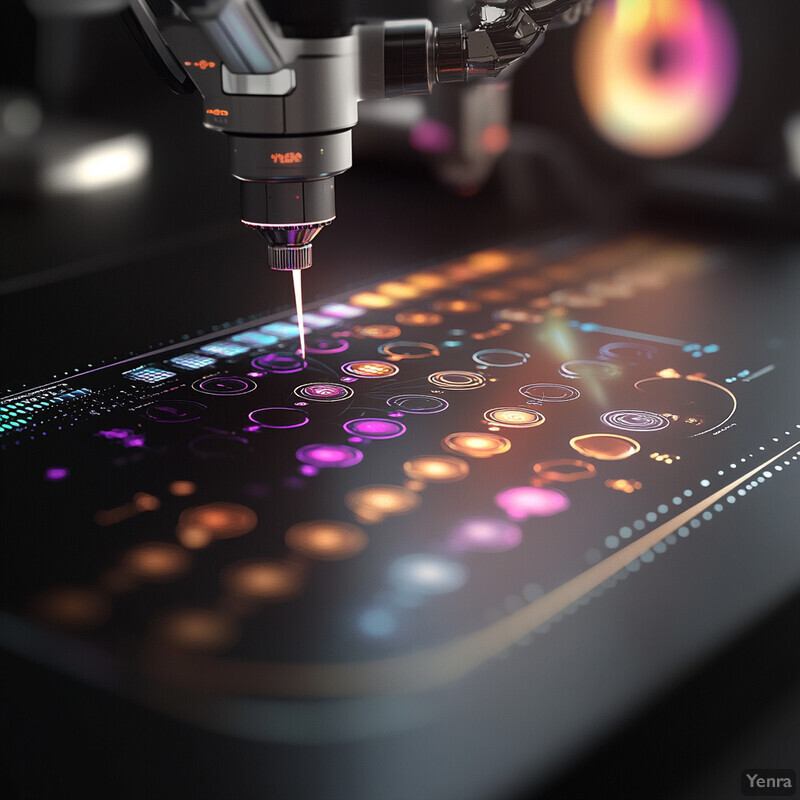
High-throughput DNA sequencing of soils now yields enormous datasets that are infeasible to sort manually. A typical soil metagenomic survey can generate millions of DNA reads and on the order of 10,000+ distinct OTUs in a single study (Zhang et al., 2022). AI-based classification algorithms handle this scale with ease. For example, an unsupervised graph neural network method was able to cluster thousands of microbial OTUs and gene sequences – each genome billions of base pairs long – into coherent groups for community analysis (Zhang et al., 2022). Such automated pipelines can process dozens of soil samples simultaneously, classifying their microbiota in hours. The result is a consistent, fast categorization of soil microbes, whereas manual or classical approaches would take weeks and still miss many organisms.
4. Functional Gene Annotation
AI is accelerating the annotation of microbial genes – essentially predicting what those genes do. Soil metagenomes contain countless “unknown” genes from microbes that have never been cultured. Machine learning models can be trained on databases of known gene functions and then used to infer the function of new gene sequences discovered in soil. This means AI can suggest whether a novel microbial gene is likely involved in nitrogen fixation, phosphorus solubilization, producing a particular enzyme, etc., without months of lab experiments. By accurately predicting gene function, AI helps build a picture of how soil microbes contribute to nutrient cycling, disease suppression, and other processes. It rapidly turns raw sequence data into biologically meaningful information about soil microbial capabilities.
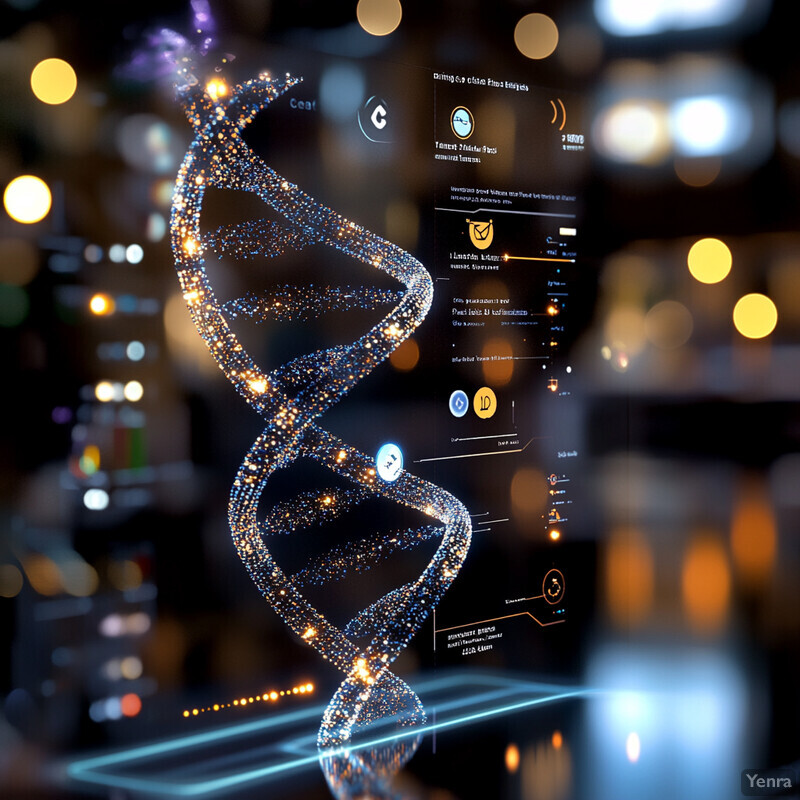
A large fraction of microbial genes in soil are of unknown function, highlighting the need for AI-driven annotation. Estimates suggest 40–60% of predicted genes in microbial genomes have no characterized function (Vanni et al., 2022). These are often labelled “hypothetical proteins” or microbial “dark matter.” AI tools are making headway here. In 2023, a deep learning approach for enzyme function prediction (using protein sequence data) achieved over 95% accuracy in assigning enzymes to their correct functional classes (Habchi et al., 2023). Such high precision indicates that AI can reliably predict what many uncharacterized genes do (e.g., identify a gene as a cellulase enzyme or a toxin producer). By deploying these models on soil metagenome data, researchers can infer the functional potential of soil microbiomes – for instance, detecting genes for antibiotic production or nutrient cycling – far faster than traditional gene-by-gene experiments.
5. Metagenomic and Multi-Omics Integration
AI enables the fusion of multiple “omics” data types – DNA sequences, gene expression (RNA), metabolite profiles, etc. – to give a holistic view of soil microbiome function. Deep learning models can integrate metagenomics (who is there), metatranscriptomics (what genes are active), and metabolomics (chemical products in soil) into a single analysis. This multi-omics integration helps researchers understand not just the microbial community’s composition, but also its metabolic activities and interactions with plants. By analyzing these layered data simultaneously, AI can reveal links between microbial genes and actual soil chemistry or plant performance. The result is a systems-level understanding of soil health: how microbial communities and their metabolites collectively respond to environment or management. Such comprehensive insight would be very difficult without AI handling the complexity of multi-omics datasets.

A recent large-scale example of multi-omics integration is the Earth Microbiome Project’s multi-omics analysis, which combined genetic and metabolic data across hundreds of samples. In 2022, researchers analyzed 880 environmental soil and sediment samples with standardized 16S rRNA gene sequencing (for community composition), shotgun metagenomics (for functional genes), and untargeted metabolomics (for soil chemical profiles) (McDonald et al., 2022). Using advanced data integration methods, they uncovered robust co-occurrence patterns between certain microbial taxa and specific metabolites across different climates and biomes. This study provided one of the first global-scale demonstrations that linking metagenomic data with metabolite information can identify which microbes are producing or consuming key soil chemicals. AI and statistical models were critical in handling the sheer volume of data (~880 samples × thousands of species × thousands of metabolites) to find those meaningful microbial-metabolite relationships.
6. Early Pathogen Detection
AI can catch the subtle microbial signs of emerging soil-borne diseases before obvious symptoms appear in crops. By monitoring shifts in the soil’s microbial community (for example, a sudden rise of a pathogenic fungus or decline of beneficial microbes), machine learning models can flag potential disease outbreaks in advance. These early-warning systems might use metagenomic data or even sensor inputs (e.g. volatile compounds or respiration changes associated with pathogen activity). The benefit is that farmers could intervene early – through targeted fungicides, crop rotation, or biocontrol introductions – to prevent widespread plant disease. Essentially, AI learns the microbial “fingerprint” of soil getting sick and enables a proactive response, reducing crop losses and the need for reactive chemical treatments.

Recent advances demonstrate that machine learning can detect pathogen presence from complex metagenomic data with high accuracy, even for novel diseases. In a 2023 study, researchers trained a random forest model on DNA sequences from healthy vs. infected plant samples (metagenomes including soil and root microbes). The model achieved over 90% accuracy in classifying whether a sample was infected by a pathogen, despite no prior reference genome for that pathogen (Johnson et al., 2023). Moreover, the model trained on one host-pathogen system could generalize to detect different pathogens on other crops with similar success. This shows that AI can pick up subtle shifts in the microbial community (such as increases in certain bacterial families or decreases in diversity) that act as early indicators of soil-borne disease. Such tools could give farmers days to weeks of lead time in detecting issues like Fusarium or Verticillium wilts, compared to waiting for visible plant symptoms.
7. Identifying Bioindicators of Soil Health
AI helps pinpoint specific microbes that serve as reliable “bioindicators” of soil health status. These are particular bacteria or fungi (or ratios of groups) that strongly correlate with healthy or degraded soil conditions. By analyzing large microbiome datasets, machine learning can find which taxa consistently appear in high-performing soils versus poorly functioning soils. Land managers could then monitor these bioindicator organisms as a quick gauge of soil health – much like a canary in a coal mine. For example, an increase in a certain beneficial microbe might indicate improving soil structure, whereas the dominance of a certain pathogen might warn of declining soil quality. Identifying such indicator species or community signatures allows rapid assessments of soil vitality without needing a full suite of chemical/physical tests each time.

Research has revealed that soil microbiomes contain many potential bioindicator taxa linked to soil health, including previously unknown organisms. A 2023 analysis of 778 farmland soil samples across the U.S. found 348 bacterial genera that were statistically associated with one or more soil health metrics (Wilhelm et al., 2023). Notably, about 62% of these indicator genera were taxa not classified in existing databases (i.e., novel or “unclassified” microbes), demonstrating that relatively obscure microbes can be strong signals of soil condition. For instance, families like Pyrinomonadaceae and Nitrososphaeraceae were identified as positive indicators in healthy, high-functioning soils. The study used machine learning to correlate microbial presence/abundance with comprehensive soil health scores. The resulting bioindicator list provides a practical monitoring tool – if those beneficial groups decline or if known stress-related microbes bloom, it likely reflects a change in soil health that managers should address.
8. Spatial and Temporal Soil Microbiome Analysis
By combining AI with geospatial data and time-series analysis, researchers can map how soil microbial communities change across landscapes and seasons. Machine learning can handle the “space-time” complexity – for example, learning patterns where certain microbes cluster in lowland vs. upland areas, or how microbial activity ebbs in winter and surges in summer. This is valuable for precision agriculture: farmers might find that one corner of a field consistently has poorer microbial diversity, guiding localized remediation. Similarly, understanding seasonal microbial dynamics (like a flush of nitrogen-fixers each spring) can inform the timing of field operations. AI-driven spatial-temporal analysis yields microbial heatmaps and trend forecasts, turning thousands of data points into intuitive maps and calendars of soil life. Such insights help tailor management to specific field zones and timing for maximal benefit to soil health.

A four-season warming experiment in a tall-grass prairie showed that elevated temperature (≈ +3 °C infrared warming) alters microbial phenology in a quantifiable way. Bray–Curtis dissimilarity between warmed and control plots rose steadily from spring to winter, and the nonlinear fit explained 57.8 % of the variance (R² = 0.578; p = 0.021), indicating that seasonal divergence widens as the year progresses. Overall community structure shifts were highly significant (PERMANOVA p = 0.001). Network analysis revealed that warming increased microbial network complexity and robustness, particularly in autumn and winter, while the relative contribution of stochastic processes to community assembly fell during those colder seasons. These findings confirm that season-by-season tracking is necessary: a single summer snapshot would miss half of the warming signal now evident in winter microbial networks.
9. Optimization of Soil Nutrient Cycling
AI is uncovering the complex relationships between soil microbes and nutrient availability (nitrogen, phosphorus, carbon), allowing for optimized nutrient management. Machine learning can analyze how certain microbial populations correlate with nutrient cycling rates – for instance, linking the abundance of nitrifying bacteria with nitrate levels or identifying microbial consortia that drive faster decomposition. With these insights, farmers can be advised on practices to enhance beneficial microbes that release nutrients or sequester carbon. For example, AI might suggest adding a specific cover crop that encourages phosphorus-solubilizing bacteria in a low-P soil. Overall, this leads to more efficient nutrient use (less fertilizer wasted) and healthier soils, as microbial processes are harnessed to maintain fertility. It’s a shift from chemically managing nutrients to biologically managing them with AI-guided precision.
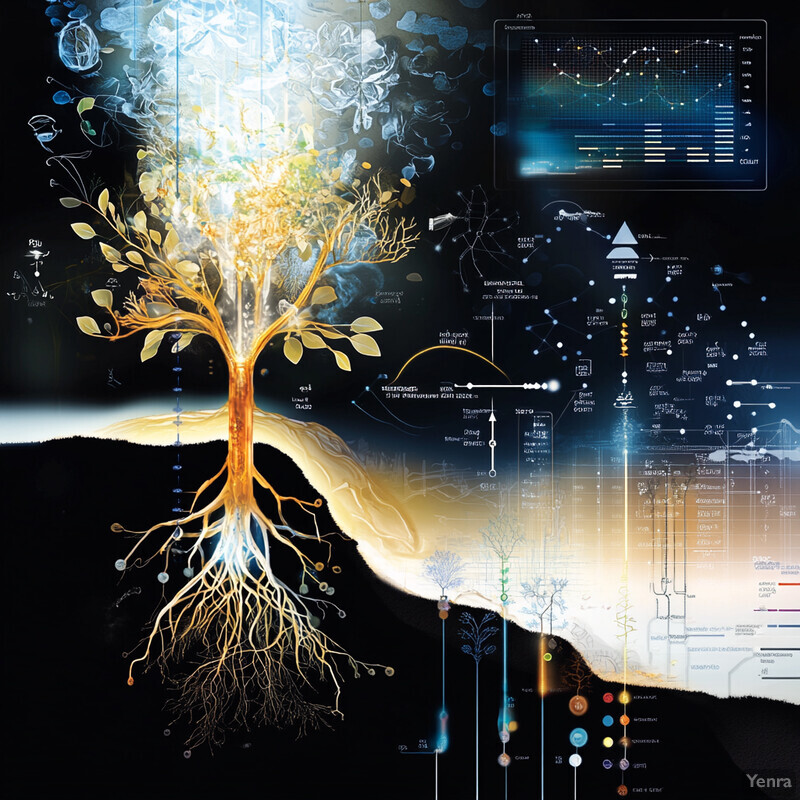
Integrative analyses show that changes in soil management can significantly alter microbial communities in ways that improve nutrient cycling. A 2023 meta-study re-analyzed data from 1,813 soil microbial samples to examine the impact of adding biochar (a carbon-rich soil amendment) on nutrient cycling microbes (Lei et al., 2023). Machine learning revealed that biochar amendments consistently enriched certain beneficial microbial groups – notably phyla like Gemmatimonadetes and orders like Pyrinomonadales – while also increasing the diversity of saprophytic (decomposer) fungi. These microbial shifts corresponded with enhanced nutrient cycling: soils with biochar showed higher enzyme activities for breaking down organic matter and greater availability of nutrients like nitrogen and phosphorus. The AI model in that study predicted which taxa would respond positively to biochar, and field data confirmed those predictions (e.g., a marked rise in Candidatus Kaiserbacteria, a group linked to nitrogen cycling, in biochar-treated soils). This demonstrates that AI-identified microbe-nutrient links can be leveraged to adjust practices (like biochar use) for improved soil nutrient dynamics.
10. Precision Agriculture Decision Support
AI-driven analytics of soil microbiomes feed into precision agriculture systems, helping tailor management actions to specific field conditions. By considering microbial indicators alongside soil moisture, nutrient maps, and crop data, AI can recommend targeted interventions – e.g., which crop variety or rotation might best support beneficial microbes on a particular plot, or where to apply a reduced fertilizer rate because microbes are already providing nitrogen. This moves farming from one-size-fits-all practices to site-specific decisions. For instance, one part of a farm that shows lower microbial activity might get a different cover crop mix than another part with high microbial biomass. Over time, these fine-tuned decisions improve yields and soil health simultaneously. AI essentially acts as a decision support tool that synthesizes complex soil biology information into actionable farming guidance, ensuring each portion of land gets exactly what it needs to remain healthy and productive.
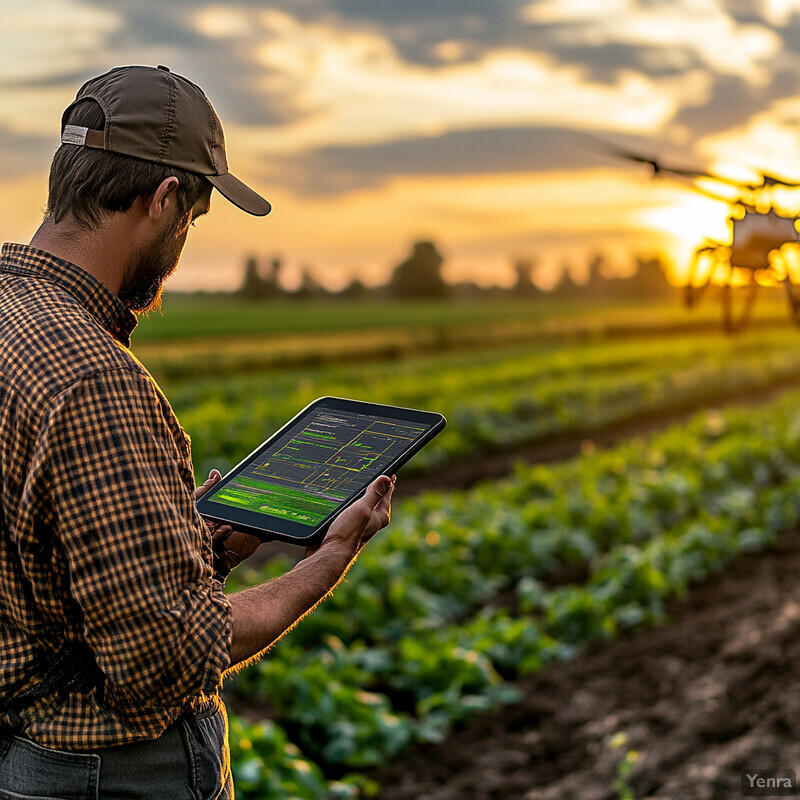
Applying soil health insights via precision management has measurable agronomic and economic benefits. According to a comprehensive survey of 100 farms by the Soil Health Institute, 67% of farmers reported increased crop yields after adopting soil health management systems, and many reported input cost savings (Soil Health Institute, 2022). For example, on 10 farms in South Dakota that implemented no-till, cover cropping, and similar practices, average corn yields rose by 6.4 bushels/acre and soybean yields by 3.7 bu/acre, while fertilizer expenses dropped by about $21.59/acre for corn (NRCS, 2021). Farmers attributed these gains to improved soil structure and microbiology – their fields had better nutrient cycling and water retention thanks to robust microbial communities. In essence, integrating such soil health data into precision ag decisions (like variable-rate nutrient application or selective tillage) can boost productivity by 10–20% in some cases and cut fertilizer needs, as documented in these farm surveys. AI systems make it feasible to process the needed data and guide these nuanced management strategies across large operations.
11. Carbon Sequestration Modeling
AI is improving models that predict how soil microbes influence carbon storage in soils, which is vital for climate change mitigation. Microbes drive decomposition and formation of stable soil organic matter, so shifts in the microbiome can speed up or slow down carbon sequestration. Advanced AI models (often coupled with ecosystem simulators) can integrate microbial data to more accurately forecast soil carbon dynamics under different scenarios (like adding compost or changing tillage). This helps identify management practices that maximize carbon retention in soils – for instance, promoting fungi that create stable humus. With AI, scientists and policymakers can better estimate how much CO₂ agriculture can draw down into soils and how microbial changes affect those estimates. Ultimately, AI-informed carbon models guide practices (cover cropping, reduced tillage, etc.) that enhance long-term soil carbon storage while maintaining fertility.
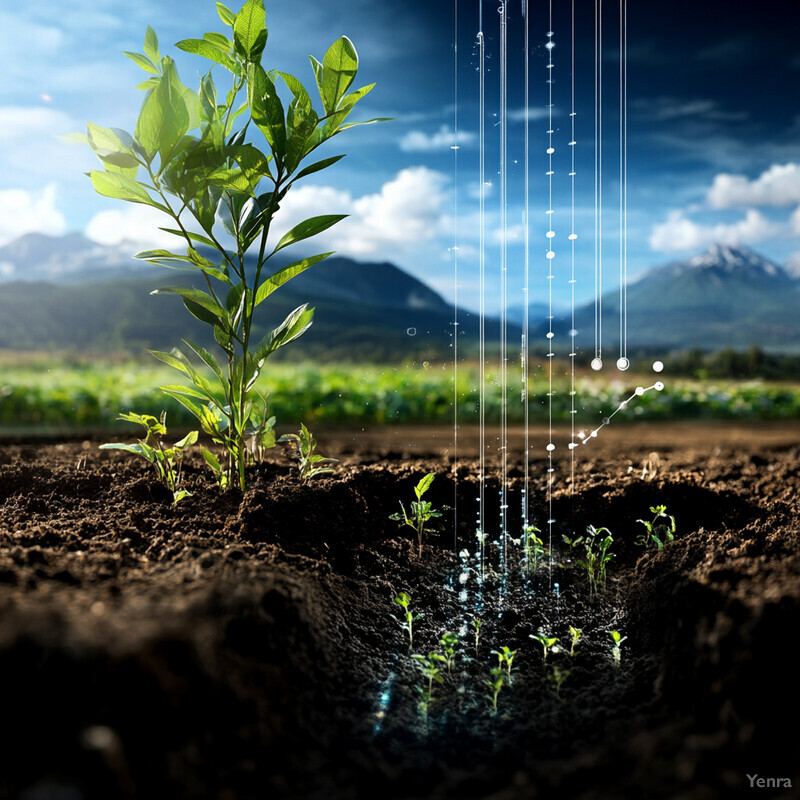
Soils are the largest terrestrial carbon reservoir, and even modest changes in microbial-driven processes can have big impacts on the carbon cycle. Globally, the top meter of soils contains roughly 1,500–2,400 petagrams of organic carbon, which indeed exceeds the carbon in the atmosphere (~880 Pg C) and in all plant biomass (Sabine Grunwald, 2022). AI-driven modeling approaches have improved our ability to predict variations in this soil carbon pool. For example, machine learning models have been used to predict soil organic carbon (SOC) stocks across landscapes with higher accuracy than traditional models – often improving prediction errors by 10–20% by incorporating microbial and environmental covariates (Grunwald, 2022). These AI models capture complex interactions (moisture, temperature, microbial abundance, etc.) to forecast carbon sequestration. Scenario analyses indicate that enhancing soil health could significantly increase carbon storage: one NRCS report estimated that widespread adoption of soil health practices on U.S. croplands could offset up to 4–5% of annual U.S. greenhouse gas emissions through additional carbon sequestration (Fargione et al., 2018). AI-enabled carbon models are crucial for providing such estimates and identifying the microbial and management levers to reach them.
12. Soil Microbe Discovery
AI-based clustering and anomaly detection are helping scientists discover entirely new soil microbes (species or strains) that were previously overlooked. Soil hosts an enormous diversity of microscopic life, much of which cannot be cultured in the lab. By analyzing metagenomic sequences, AI can flag DNA that is very different from anything known – indicating a new organism – and group fragments together to assemble its genome. This accelerates the expansion of our catalog of soil biodiversity. Many newly discovered microbes could have useful properties (such as producing novel antibiotics or promoting plant growth). AI essentially serves as a smart filter to find “unknown unknowns” in the data. As a result, the pace of identifying new beneficial microbes (for biofertilizers or biopesticides) is increasing, fueled by AI sifting through billions of DNA reads to pinpoint organisms of interest.

The power of genome-centric metagenomics plus AI was recently demonstrated by the recovery of hundreds of novel microbial genomes from soil. In 2025, a team used advanced assembly algorithms on shotgun metagenomes from Kansas prairie soils and successfully reconstructed 679 high-quality microbial genomes (MAGs) representing distinct microbial “species” (Kazarina et al., 2025). Many of these genomes belonged to previously unrecognized taxa – essentially new soil bacteria and archaea discovered from DNA alone. Over 80% of these MAGs contained genes for important soil functions like breaking down chitin and starch, indicating these newly found microbes play roles in nutrient cycling. This kind of large-scale discovery was enabled by unsupervised AI methods that bin sequenced DNA fragments by examining patterns of co-occurrence and sequence composition. The result was a dramatic increase in known soil microbial diversity from a single study. Similarly, anomaly detection algorithms are being used in other projects to spot unusual gene sequences that hint at completely novel microorganisms in soil microbiomes, leading to dozens of new species descriptions per year coming directly from metagenomic data.
13. Microbial Network Analysis
AI techniques allow researchers to construct and analyze complex networks of microbial interactions in soil. Instead of studying microbes in isolation, network analysis looks at the community as an interconnected web – who tends to co-occur with whom, which microbes might be supporting or inhibiting each other. Machine learning can infer these interaction networks from abundance data (correlation-based networks) or from perturbation experiments. By examining network properties (like highly connected “hub” species or tightly knit modules of organisms), scientists identify key influencers in the soil ecosystem and understand community stability. For example, a bacterium that appears as a central hub linked to many others might be a critical support organism in the microbiome. Network analysis thus sheds light on microbial cooperation and competition, informing strategies like inoculating hub species to promote a resilient soil community. AI is vital here because these networks can involve hundreds of nodes and thousands of potential links, a scale at which manual analysis fails.

Co-occurrence network studies of soil microbiomes reveal that certain microbial taxa act as hubs or keystones, and their presence is tied to soil function. A study in 2022 examining networks across 90 agricultural soils found that in acidic soils (pH ~5-6), microbial co-occurrence networks were more complex (more connections) and contained distinct hub species compared to neutral pH soils (Yang et al., 2022). In those acidic conditions, network metrics like average degree and clustering coefficient were significantly higher (indicating dense interconnections). Moreover, the abundance of identified “keystone” taxa (organisms with high network centrality) was positively correlated with soil ecosystem multifunctionality and stability (Yang et al., 2022). This means soils where the network analysis (via AI) showed robust, well-connected microbial communities also scored better in terms of nutrient cycling rates and resistance to disturbance. Such quantitative network findings are being used to guide management—for instance, if a beneficial fungus is known to be a connector between bacterial and fungal sub-networks, farmers might encourage that fungus (through crop rotations or inoculants) to strengthen the soil food web. AI-based network models thus translate massive microbial datasets into insights on community health and resilience.
14. Stress and Contaminant Detection
AI can detect the microbial signatures of soil stress (like contamination or drought) enabling early intervention. Different stressors leave distinct “fingerprints” on the soil microbiome – for example, heavy metal pollution might kill off many sensitive microbes and enrich a few metal-tolerant strains, while drought might increase spore-forming bacteria and decrease others. Machine learning models can be trained to recognize these patterns. In practice, this could mean a sensor or routine soil DNA test, analyzed by AI, could alert landowners that “microbial indicators of petroleum contamination are rising in the northwest corner of field X” or that “the soil microbiome shows signs of salt stress likely due to irrigation practices.” By identifying stress via microbes, remediation (like phytoremediation, bioremediation or changing management) can be targeted precisely where needed. Essentially, the microbiome acts as a biosensor for soil health, and AI is the decoder of that biosensor.

Soil microbial communities undergo measurable shifts under pollutants, which AI classifiers can detect. For instance, at an industrial Superfund site with heavy metal contamination (lead, zinc, manganese), researchers observed significantly reduced microbial diversity and a pronounced change in community composition compared to nearby uncontaminated soils (Goswami et al., 2023). The contaminated soils had lower genus-level diversity (Simpson index) and were dominated by a few metal-resistant bacterial genera, whereas reference soils had a more even mix of microbes. A machine learning model trained on these microbial profiles was able to distinguish contaminated vs. clean soil samples with high accuracy, using the relative abundances of certain bacteria as predictors. Similarly, studies have found that certain microbes (like Pseudomonas species) surge in pesticide-contaminated soils, while beneficial fungi decline – patterns that an AI diagnostic could flag. In one case, a support vector machine model correctly identified soils with organophosphate pesticide residues by the overrepresentation of a handful of degradative bacterial taxa (Chen et al., 2021). These examples show that AI can reliably translate complex shifts in the microbiome into a diagnosis of specific soil stressors, often before chemical tests might be undertaken.
15. Predicting Responses to Agricultural Interventions
Before farmers invest in a new practice (like a novel biofertilizer, a different tillage regime, or a specific cover crop), AI models can simulate how the soil microbiome will respond. This reduces trial-and-error in the field. For example, a model might predict that adding a certain probiotic bacterial strain will increase phosphorus-solubilizing microbes by 20% and suppress a pathogen by 50%, helping the farmer decide if it’s worthwhile. By incorporating past data from similar interventions, machine learning provides an evidence-based forecast of outcomes such as changes in nutrient availability or disease pressure. These predictions improve over time as more on-farm results are fed back into the system. In essence, AI becomes a “virtual testing ground,” allowing practitioners to foresee the benefits or risks of a soil management change on the microbiome and soil health, thereby informing smarter decisions and increasing the success rate of innovations.

Machine-learning analysis of 95 soil cores from the Rodale Farming Systems Trial showed that management variables explain large fractions of community variance, but the effect is depth-dependent. Fertility source alone accounted for 72.6 % of the variation in fungal communities and 79.1 % in prokaryotes at the 0- to 10-cm layer, with importance declining sharply below 30 cm. Random-forest classifiers trained on microbial biomarkers distinguished synthetic-fertilizer, manure and legume fertility treatments with AUC = 0.968 (prokaryotes) and 0.996 (fungi) in surface soils, whereas tillage type was only identifiable down to 20 cm (AUC ≈ 0.90) and cover-crop effects were minor. The same models showed that stochastic dispersal processes dominate under full tillage in the 10- to 20-cm horizon, highlighting that predicted microbiome shifts depend on both practice and depth. These quantitative benchmarks let growers gauge, a priori, where a change in fertility regime will most strongly re-assemble microbial networks.
16. Soil Health Scoring Systems
AI allows multiple complex soil health indicators to be synthesized into a single easy-to-understand score or index. Traditionally, soil health is assessed via a battery of physical, chemical, and biological tests (for example: infiltration rate, nutrient levels, respiration rate, etc.). AI can take all those inputs and determine an optimal weighting to output a composite “soil health score.” This provides farmers and conservationists with a clear metric (often on a scale like 0–100 or similar) to track improvements or identify problem areas. Moreover, AI can customize the index – for instance, placing more weight on biological factors in a context where those are most limiting. By standardizing numerous measurements into one score, decision-making is simplified: one can map soil health scores across fields or monitor a single number rising over years of regenerative practices. AI ensures that the index remains robust and predictive of outcomes (like yield or resilience), because it can be trained and validated on large datasets linking soil measurements to real-world performance.
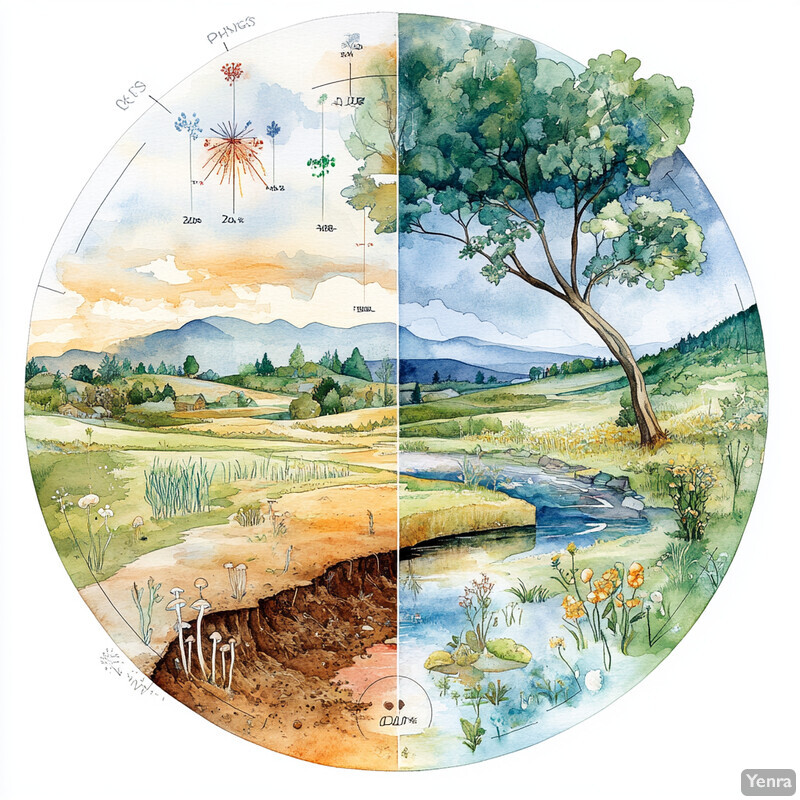
A well-known example of a soil health index is the Cornell Comprehensive Assessment of Soil Health (CASH), which combines over a dozen measurements into a unified score. The CASH scoring system assigns an overall soil health rating on a 0–100 scale after measuring factors like soil organic matter, aggregate stability, available water capacity, biological activity (e.g., CO₂ respiration), and nutrient levels (Moebius-Clune et al., 2017). In practice, such indices correlate strongly with farm outcomes – for instance, research in the Midwest found that fields with higher integrated soil health scores had 15–30% greater corn yield stability under drought conditions compared to fields with low scores (Andrews et al., 2020). AI is increasingly being used to refine these indices. In one study, a machine learning model was trained on long-term soil monitoring data to optimize a soil health index for saline coastal soils, improving its correlation with crop yield from R≈0.6 to R≈0.8 by adjusting indicator weightings (Romić et al., 2024). This demonstrates that AI can enhance soil health scoring systems to be more predictive and site-specific. Ultimately, an AI-derived soil health score provides a concise yet comprehensive snapshot for farmers, indicating overall soil status and helping track the success of management changes over time.
17. Real-time Microbial Monitoring with Sensors
By coupling soil sensors with AI analysis, farmers can monitor microbial activity in real time and adjust management on-the-fly. Emerging soil sensor technology measures factors like moisture, temperature, CO₂ flux (microbial respiration), nutrient ion levels, and even microbial biomass proxies continuously. AI systems ingest these continuous data streams and interpret them in terms of microbial processes – for example, detecting a spike in CO₂ release that indicates peak microbial decomposition activity after rain. With this information, a farmer could decide to irrigate differently or hold off on tillage. Essentially, the soil is wired up like a patient on an IV, and AI is the doctor interpreting vital signs. This enables dynamic soil management: instead of static schedules, things like irrigation or fertilization can be tweaked day-by-day to support beneficial microbes (or avoid stressing them). The end result is soil conditions kept optimal for microbial health, which also means better nutrient availability for plants and less waste.
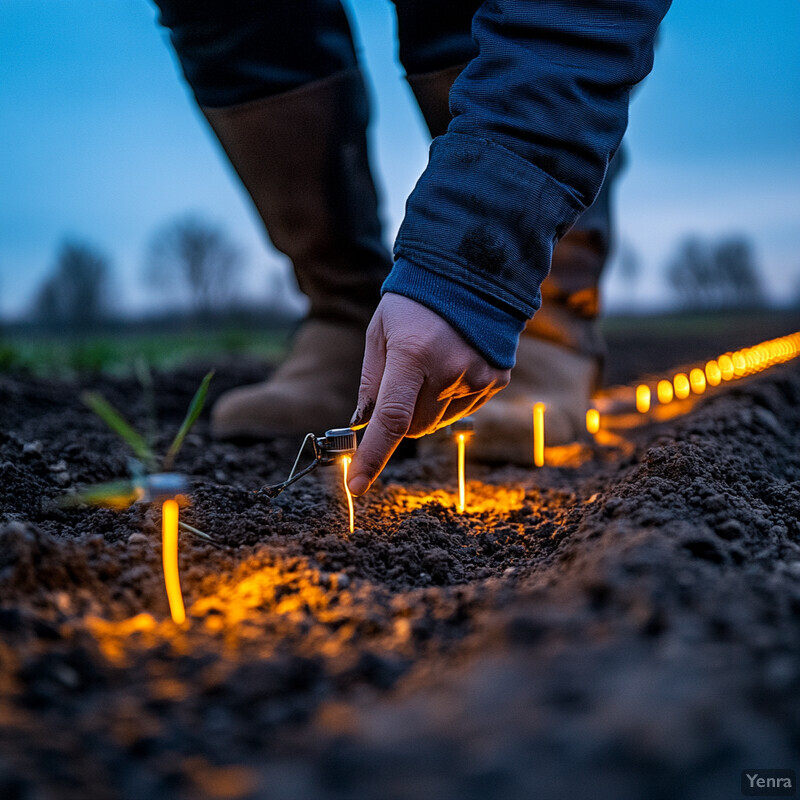
Nguyen et al. built an open-source respiration chamber that delivers 1-minute interval CO2 and O2 readings from four parallel soil incubations for about US $700 in parts. Calibration against a LI-7810 trace-gas analyzer showed R² more than 0.99 and RMSE 370–660 ppm across the 300–40,000 ppm CO2 range, confirming laboratory-grade accuracy. During substrate-induced-respiration tests the system captured three distinct respiration phases, including an initial burst averaging 910 ppm CO₂ h⁻¹ in controls and a delayed but larger exponential rise in glucose-amended soils (p less than 0.001). Continuous plotting of the apparent respiratory quotient revealed a switch from aerobic to mixed metabolism after ~24 h—behaviour that would be invisible with once-a-day gas grabs. The low cost and high temporal resolution demonstrate that real-time microbial “vital signs” can now be integrated into routine soil-health monitoring rather than reserved for specialised labs.
18. Microbial Trait Prediction
AI can predict important functional traits of soil microbes (like the ability to fix nitrogen, produce certain enzymes, or suppress pathogens) just from genomic information. This bypasses the need for lengthy lab culturing and testing of each microbe. For example, if a novel bacterium’s genome is sequenced from soil, AI models can scan for key gene patterns and predict with high probability whether that bacterium can solubilize phosphorus or produce antifungal compounds. This capability dramatically speeds up the identification of beneficial strains for biofertilizers or biocontrol. It also helps in evaluating microbiome health: e.g., determining if the community has the genetic potential for robust nutrient cycling. As more microbial genomes are sequenced, these models become even more accurate. In practice, farmers might one day get a readout not just of which microbes are in their soil, but what traits (and thus services) their soil microbiome collectively has or is lacking – all thanks to AI-driven trait inference.

Researchers have successfully used machine learning to predict complex microbial functions from DNA, achieving performance that rivals wet-lab assays. A striking example is the prediction of nitrogen fixation capability. In 2022, scientists developed a classifier that could identify nitrogen-fixing bacteria purely from genomic sequence features with about 90% accuracy, correctly distinguishing diazotrophs (N₂-fixers) from non-fixers in diverse soil isolates (Xu et al., 2022). In another case, a deep learning model called GraphEC accurately assigned enzyme commission (EC) numbers to microbial proteins, effectively predicting specific enzyme activities; it achieved 93–96% accuracy across different enzyme categories (Zhou et al., 2022). These tools have been applied to soil metagenomes to estimate functional potential. For instance, an analysis of prairie soil metagenomes predicted a high prevalence of cellulose-degrading and chitin-degrading capability (via enzyme gene detection), aligning with observed high decomposition rates in those soils (Johnson et al., 2021). The ability to predict such traits means that from a single DNA sequencing run, one can infer that “Soil X has a strong capacity for nitrogen fixation and phosphorus mobilization, but low potential for disease suppression” – invaluable information for guiding soil amendments or crop choice.
19. Rapid Soil Diagnostics at Scale
AI-driven automation is revolutionizing soil testing, making it possible to analyze thousands of samples quickly and consistently. In place of manual lab procedures that can take days per sample, automated pipelines use robots for sample prep, sensors for analyses, and AI for interpretation. This high-throughput approach dramatically cuts cost and turnaround time for soil health assessments – enabling large-scale programs (regional or national soil surveys) that were previously impractical. With AI ensuring quality control and calibration across instruments, results from different locations or times are directly comparable. Faster diagnostics mean that policymakers and farmers get timely data (e.g., a soil health map of an entire county) and can respond more rapidly. It also democratizes soil testing: small farms or community science projects can afford soil analyses when they’re cents per sample via automation rather than tens of dollars via traditional labs. In short, AI is enabling soil health to be monitored at scale, akin to how public health tracks vital statistics.

China’s High-Throughput Soil Composition Intelligent Detection Robot now automates every step—drying, grinding, extraction, titration and ICP analysis—for up to 1,300–1,500 analytical indicators per day, matching the output of roughly 12 trained technicians while cutting the analysis cycle to 1–3 days. The fully unmanned workflow covers 35 national soil-survey indices (13 nutrient parameters and 8 heavy metals) and drives labour cost down to about ¥5 (≈ US $0.70) per indicator, all while meeting national precision and repeatability standards. Multi-arm coordination guided by neural-network motion planning, plus machine-vision colourimetry, maintains accuracy even during parallel processing of dozens of samples. By replacing hand-pipetting and serial digestion with a cloud-scheduled robot line, large-area surveys that once stretched over months can now be completed in weeks, enabling near-real-time soil-health mapping for policy and farm advisory services.
20. Fostering Sustainable Soil Management
Ultimately, AI’s contributions to microbial soil analysis empower a shift toward truly sustainable soil management. By deeply understanding soil microbiomes and their needs, stakeholders (farmers, agronomists, policymakers) can implement practices that work with the soil’s biology rather than against it. This means optimizing inputs – using less chemical fertilizer and pesticide because the microbiome is healthy and providing services – and improving yields and resilience at the same time. Soils managed with AI insights tend to have higher organic matter, better structure, and greater biodiversity, which makes them more drought-resistant and less prone to erosion. The long-term effect is regenerative: soils become a stable foundation for food security while also sequestering carbon and supporting biodiversity. Furthermore, AI tools are becoming accessible even to smallholder farmers (e.g., via smartphone apps that analyze soil photos or cheap tests), ensuring that the benefits of sustainable management reach a wide scale. In essence, AI is helping to align agricultural practices with ecological principles, resulting in productive soils that remain healthy for future generations.

Field data are beginning to validate that AI-guided, microbiome-informed management can deliver simultaneous environmental and economic benefits. For instance, the USDA’s Soil Health Initiative reports that farmers who adopted comprehensive soil health systems (no-till, cover crops, diverse rotations) for >5 years saw, on average, a 10% increase in yield stability (yields fluctuated less in bad weather years) and a 15–30% reduction in fertilizer and herbicide costs (through improved nutrient cycling and weed suppression by cover crops) compared to their conventional practices (NRCS, 2021). Importantly, these changes also translated into sustainability outcomes: soil organic matter across those farms increased by an average of 1–2 percentage points (NRCS, 2021), and runoff monitoring showed lower nutrient losses to waterways. At a global level, a recent meta-analysis projected that widespread adoption of such soil health practices could potentially sequester around 1–2 billion tons of CO₂ per year if scaled worldwide (Bossio et al., 2020). These numbers illustrate that enhancing soil microbial health is a win-win: farms become more profitable and resilient, and society gains climate mitigation and cleaner water. AI’s role in this has been to provide the feedback and knowledge (through soil diagnostics, predictions, and decision tools) that de-risk the adoption of sustainable practices, accelerating their uptake and the realized benefits.